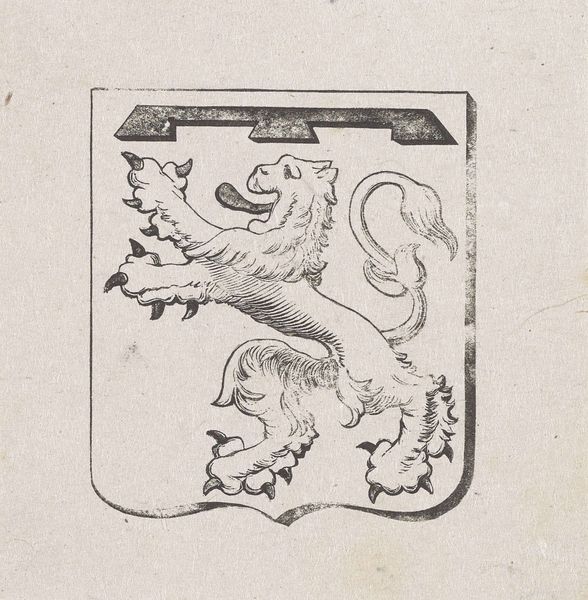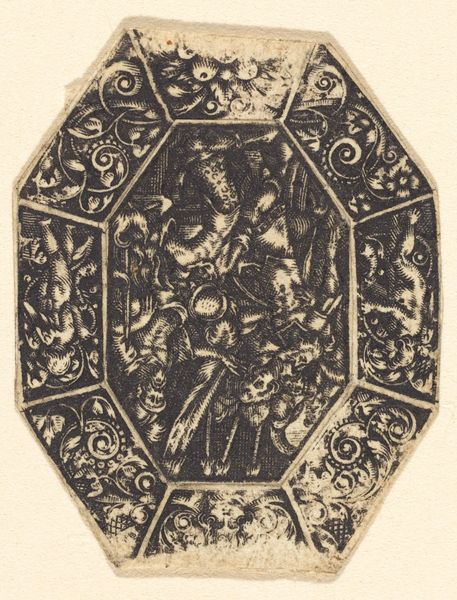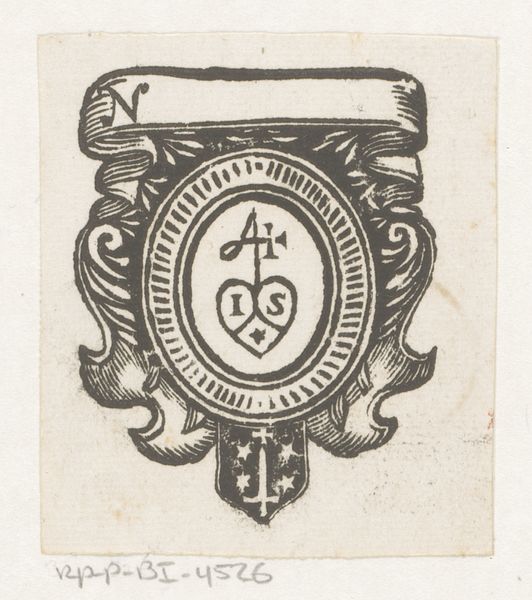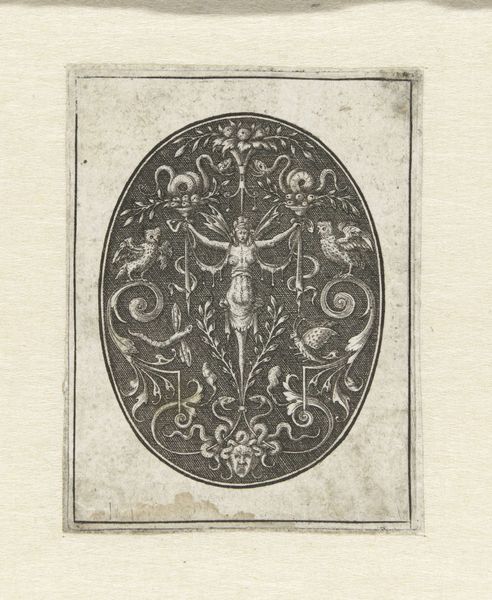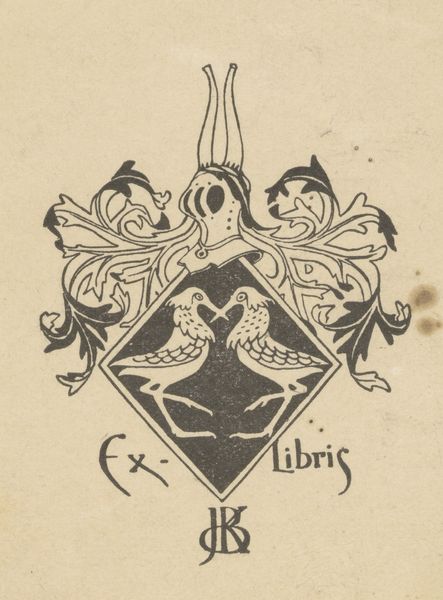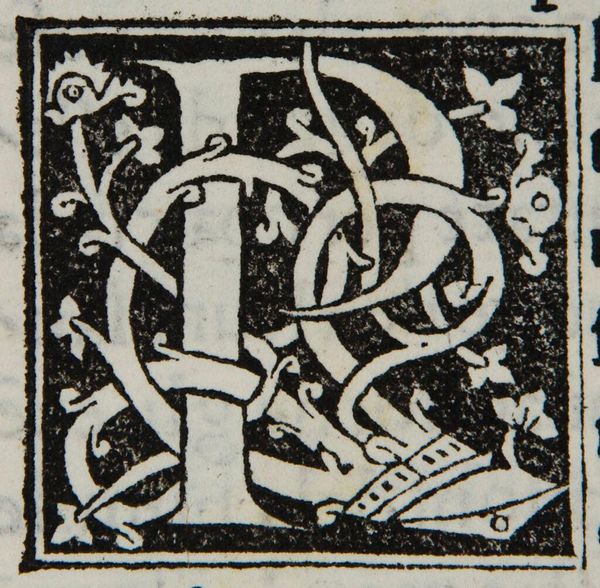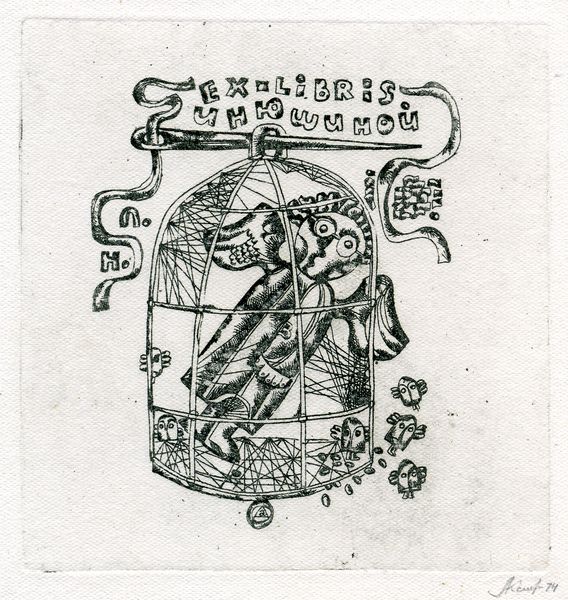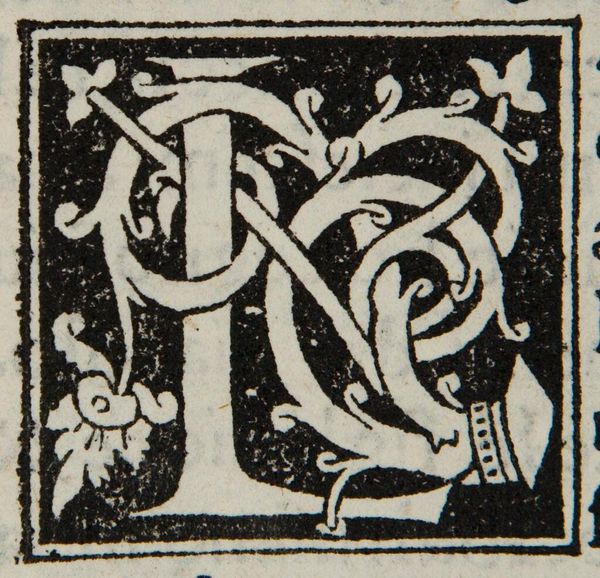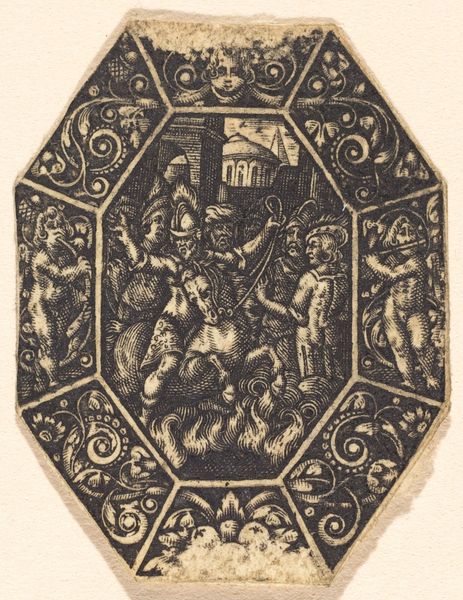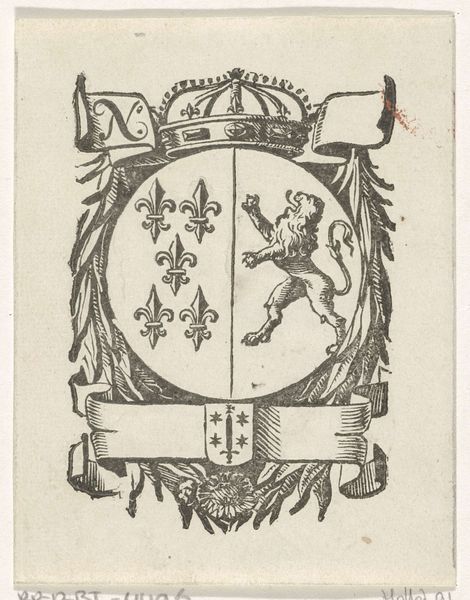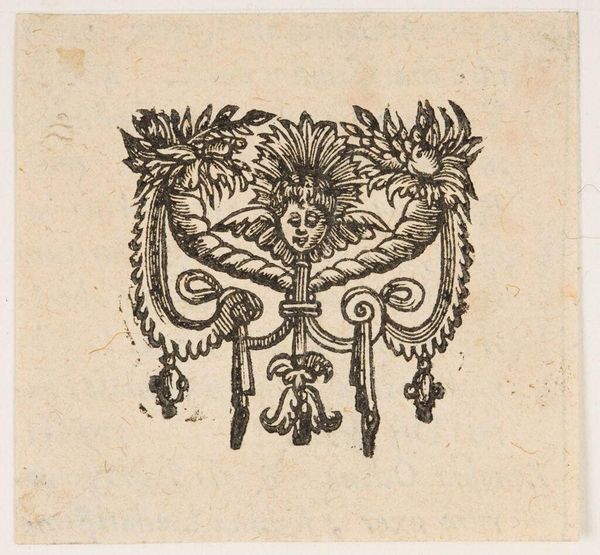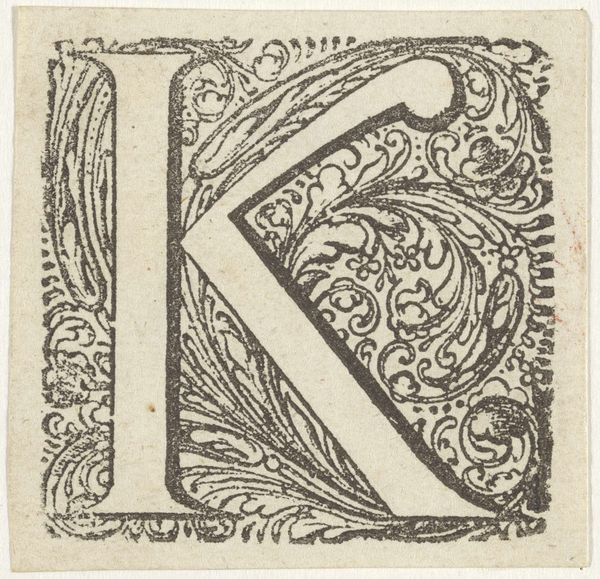
graphic-art, print, woodcut
#
graphic-art
#
art-nouveau
# print
#
old engraving style
#
hand drawn type
#
hand lettering
#
figuration
#
form
#
personal sketchbook
#
hand-drawn typeface
#
pen-ink sketch
#
woodcut
#
ink colored
#
line
#
pen work
#
symbolism
#
sketchbook drawing
#
sketchbook art
Dimensions: height 79 mm, width 70 mm
Copyright: Rijks Museum: Open Domain
Curator: This is "Vignet voor Duwaer & Van Ginkel," a woodcut print created around 1904 by Mathieu Lauweriks. It's a rather striking image. Editor: Immediately, I’m struck by the stark contrast – the interplay of solid black figure against the negative space. There’s a real dynamism in its compact form. Curator: Absolutely. The piece demonstrates a keen understanding of symbolism prevalent in Art Nouveau. Note the figure framed by the stylized foliage; observe how its posture lends to the integration with the name and the overall design. Editor: As a materialist, I’m particularly interested in the woodcut technique itself. Consider the labor involved in carving away the wood to achieve such defined lines and intricate details, particularly with the lettering. You can see the artist's hand so clearly in the raw cuts and textures of the material. What type of wood do you imagine they used? Curator: I couldn't speculate without closer inspection. However, the graphic rendering reinforces the symbology of new beginnings and completion with its Greek alpha and omega. Note also the repetition and spatial balance, guiding our eyes around the entirety of its composition. Editor: And what about the commercial purpose of this vignet? How does this blend the world of graphic design, artistic labor and capitalist economy to produce it for Duwaer & Van Ginkel? It invites a broader societal conversation around art, production, and commercialization in the early 20th century. It brings an art form to ordinary everyday usage. Curator: An astute observation! The intentional geometric composition of organic and symbolic motifs suggests the beginning of abstraction as a trend in design and aesthetics. In the larger sense, it underscores the departure from classical representation. Editor: Looking at this, it reminds me that so much artistry often exists within these historical byproducts. I will definitely think about that intersection between design, material practice and marketing from now on. Curator: Indeed. It's a fascinating glimpse into the interwoven dynamics between symbolism and pure artistic creation.
Comments
No comments
Be the first to comment and join the conversation on the ultimate creative platform.
